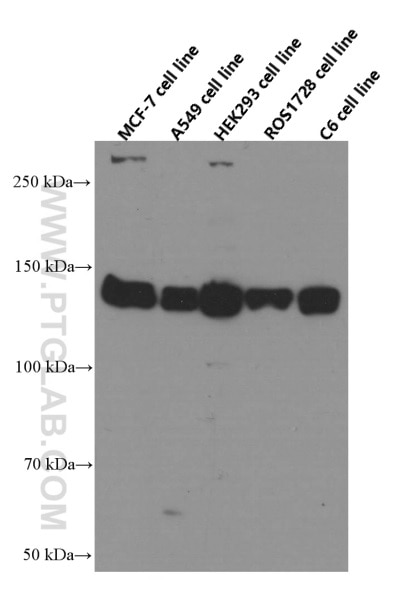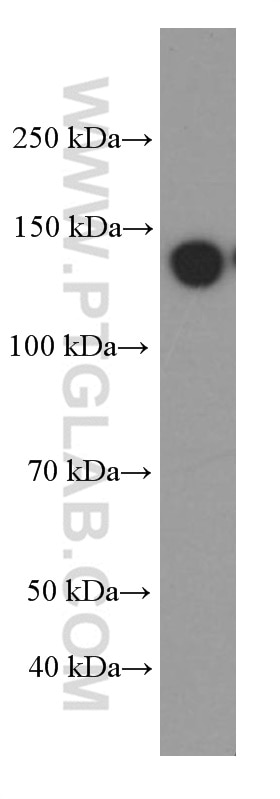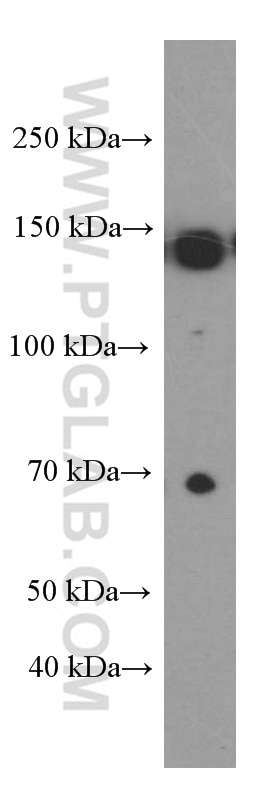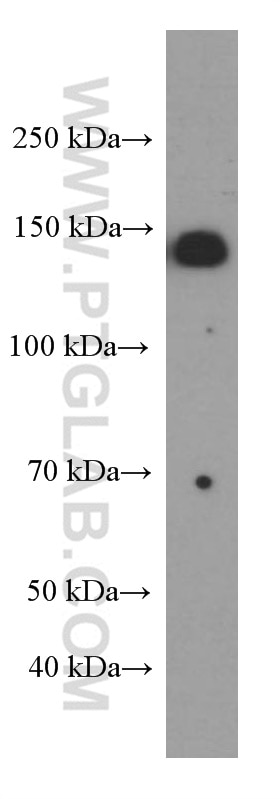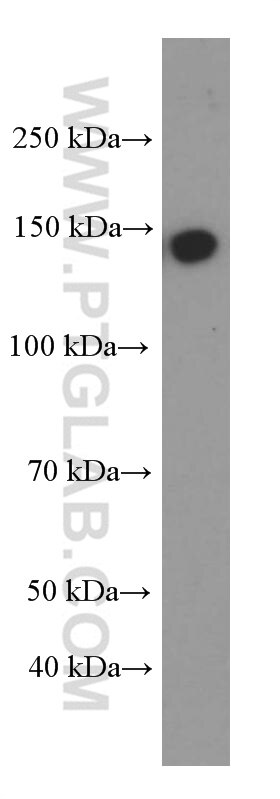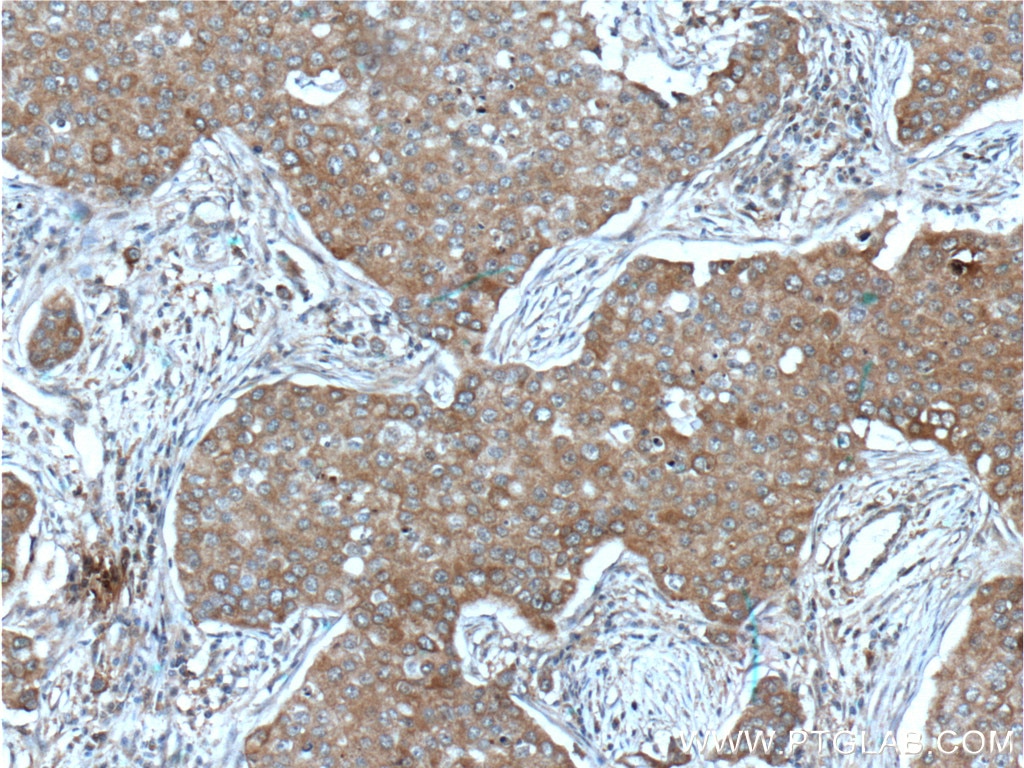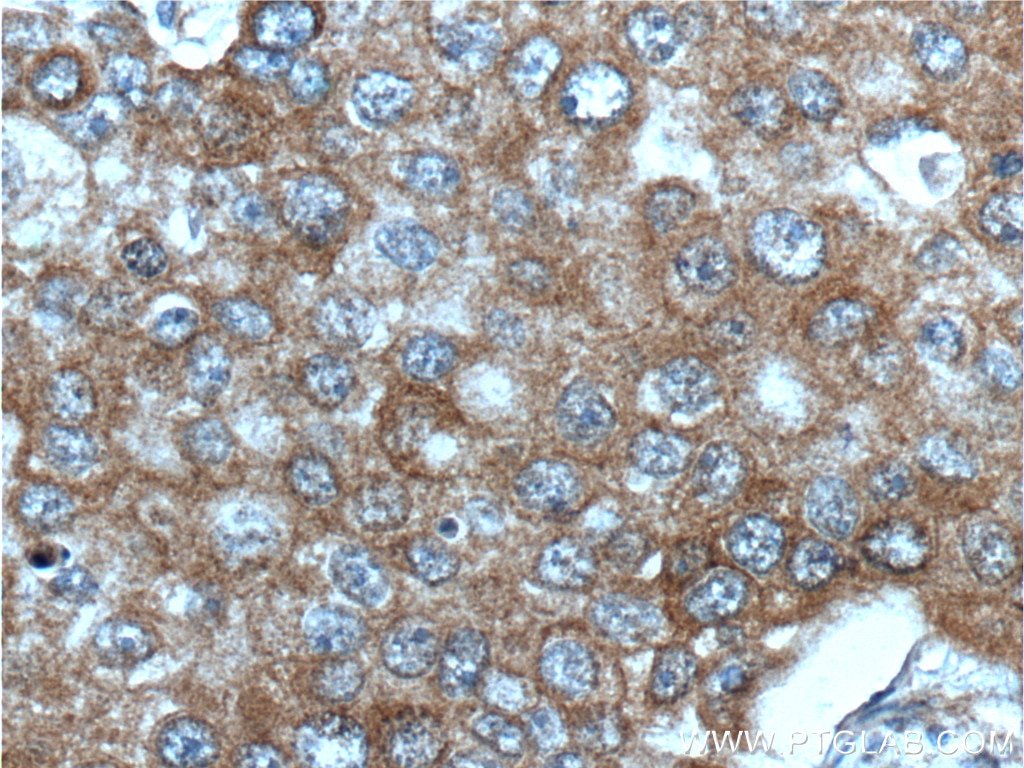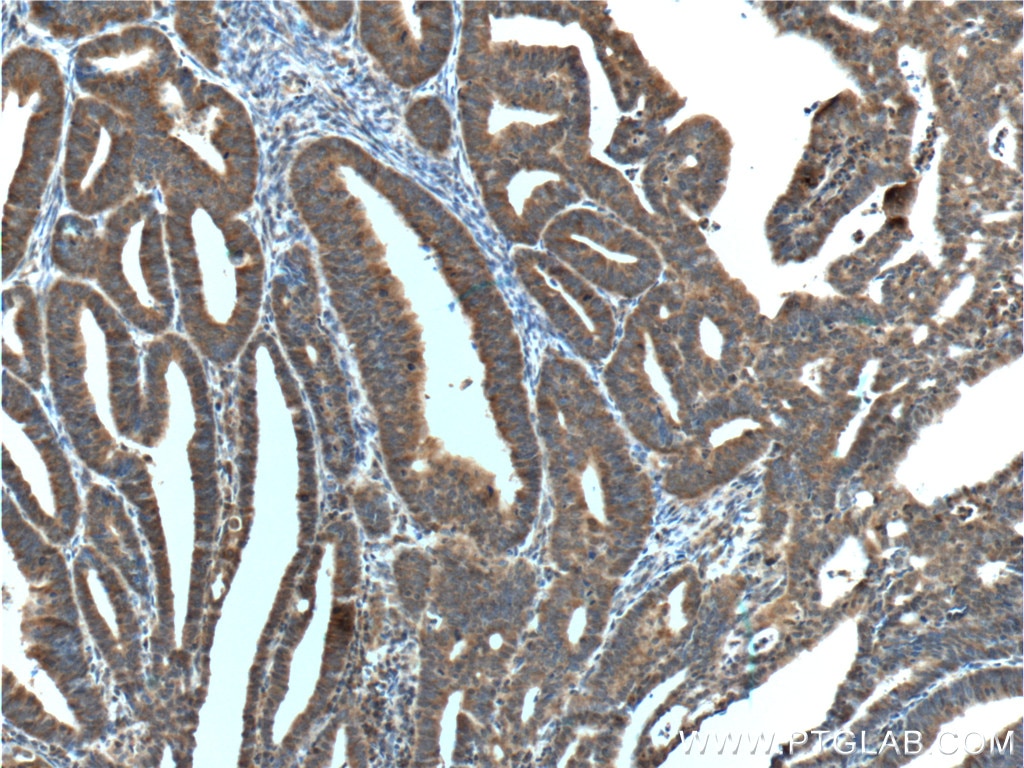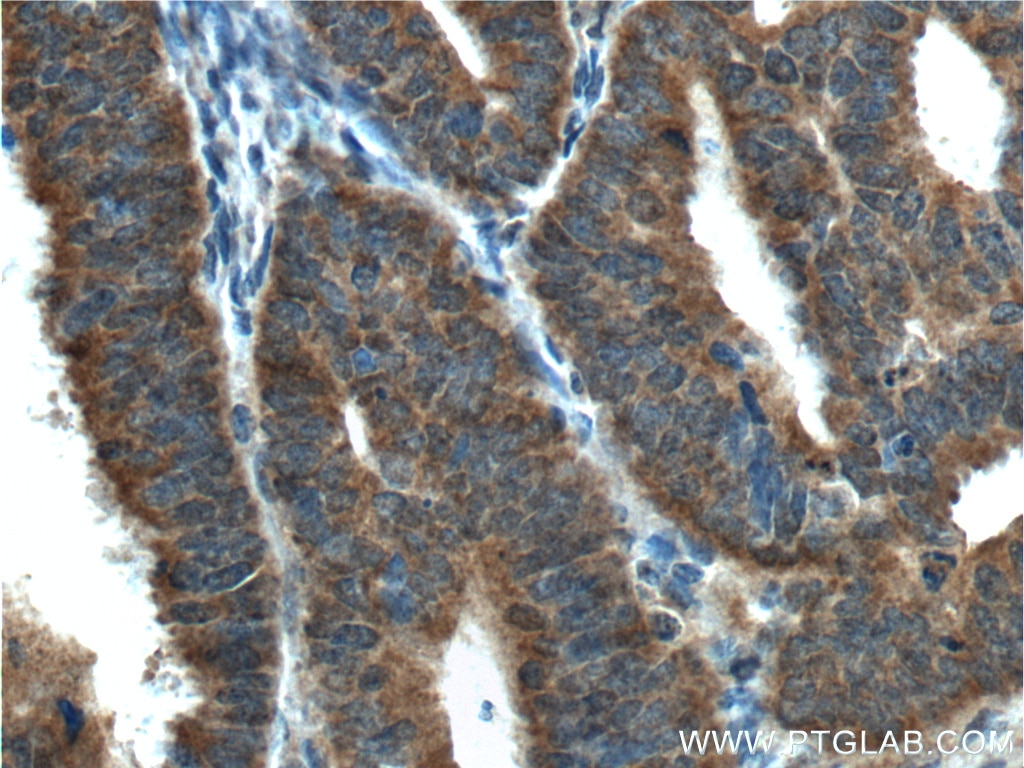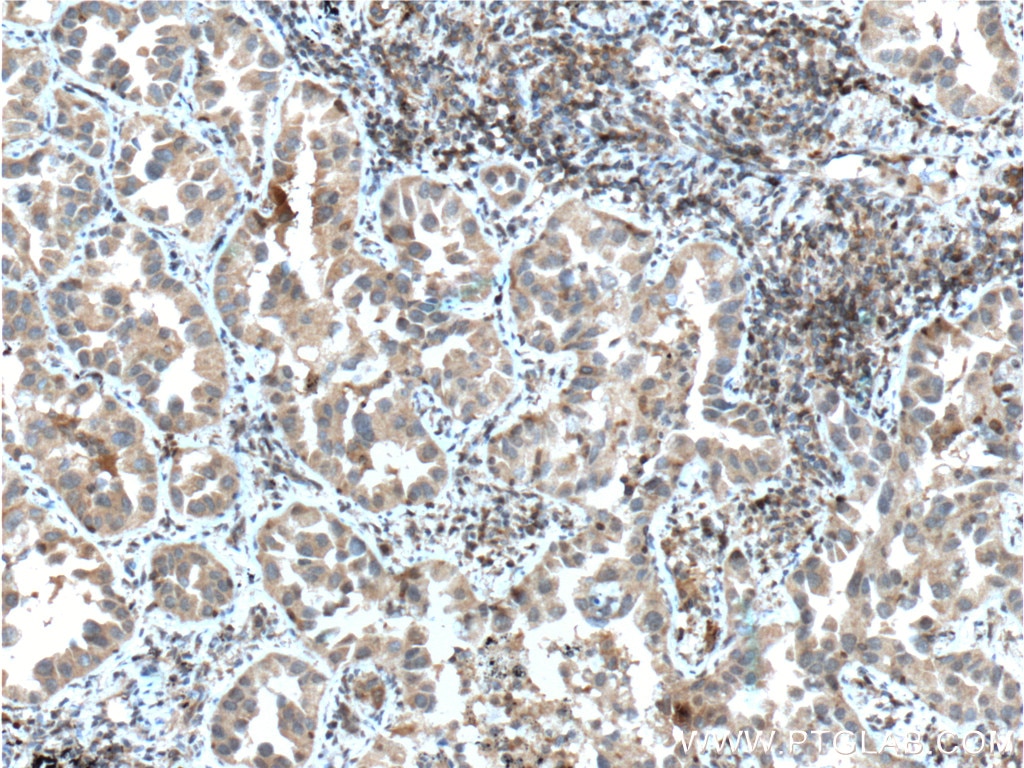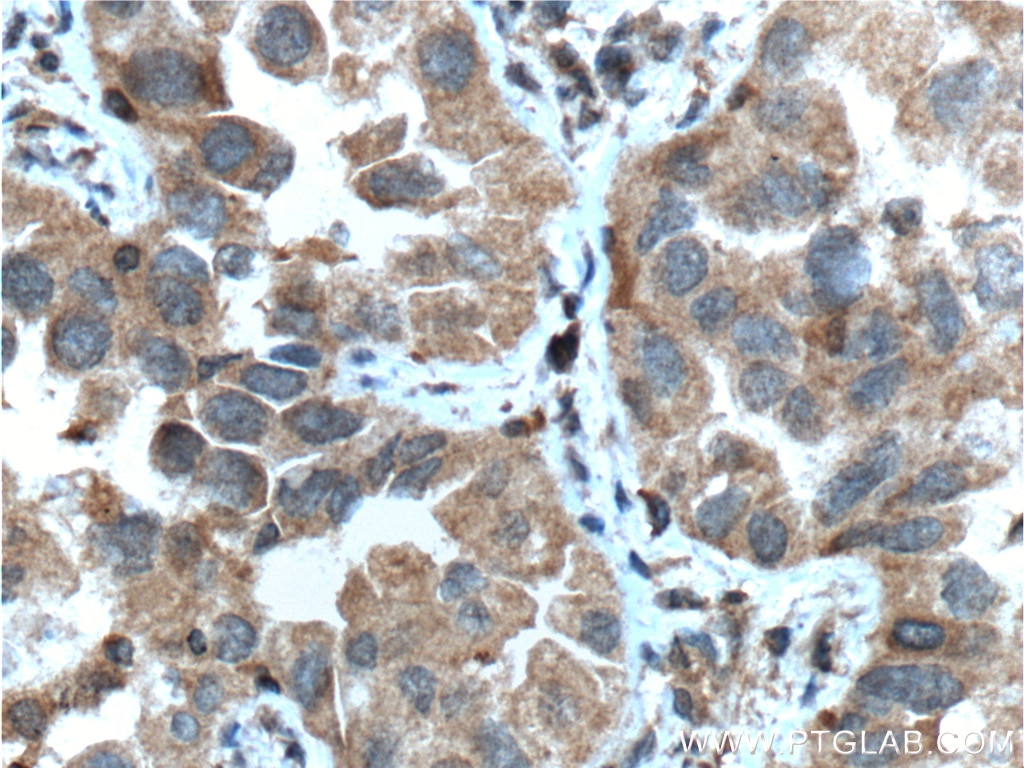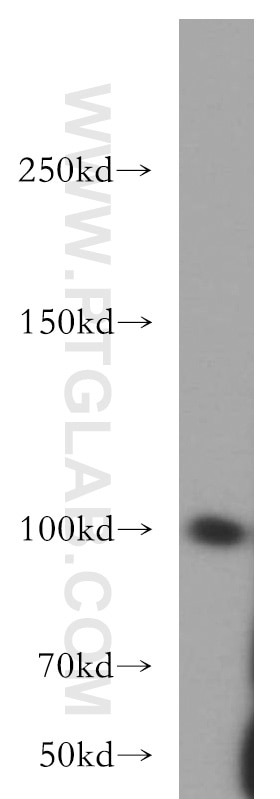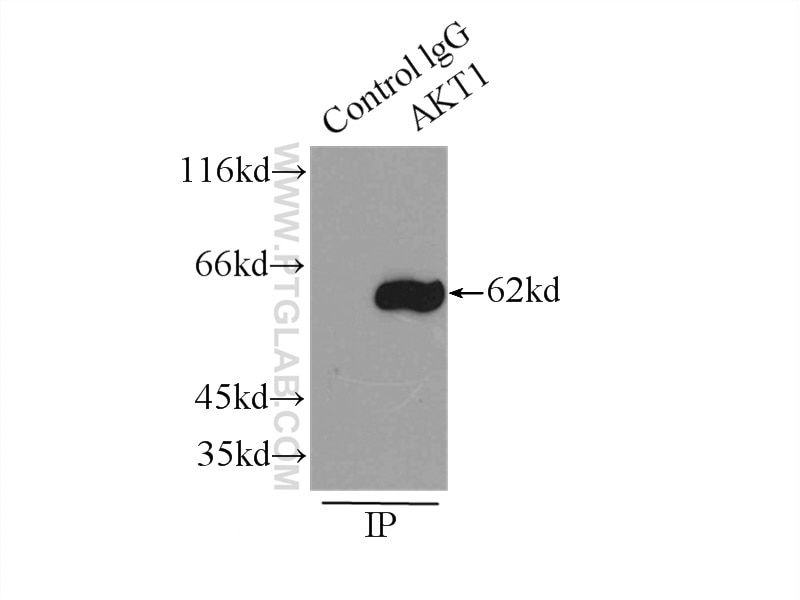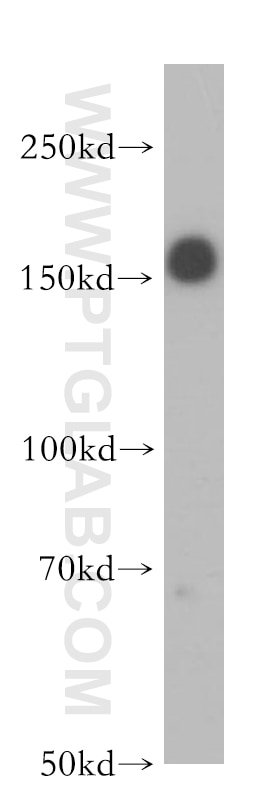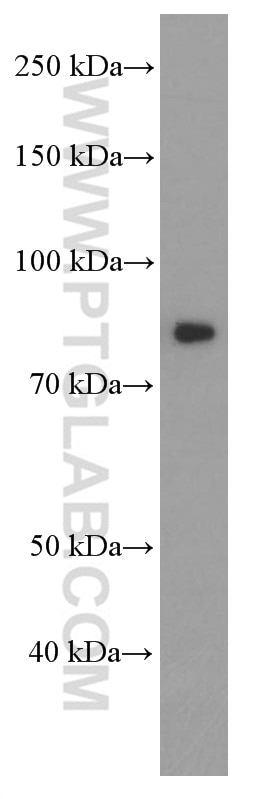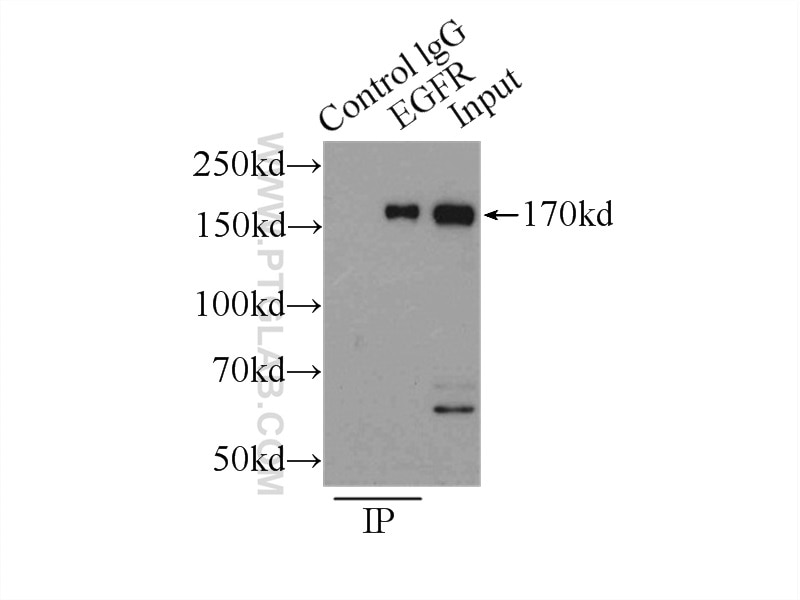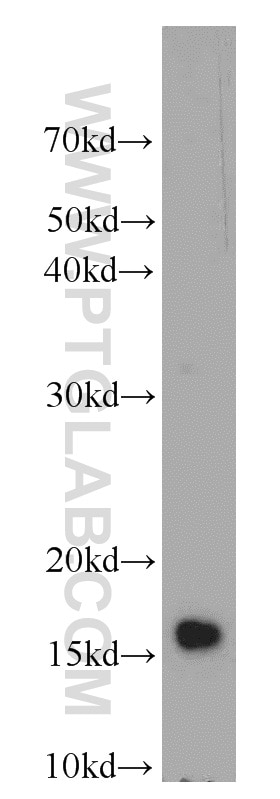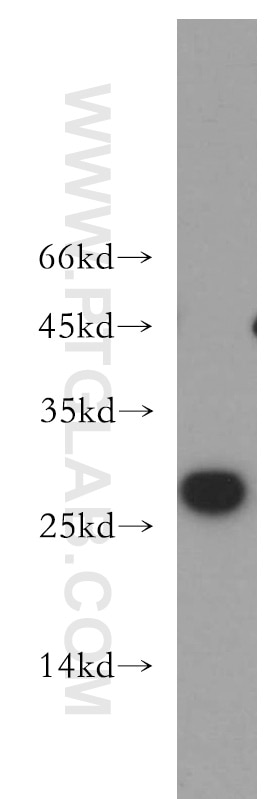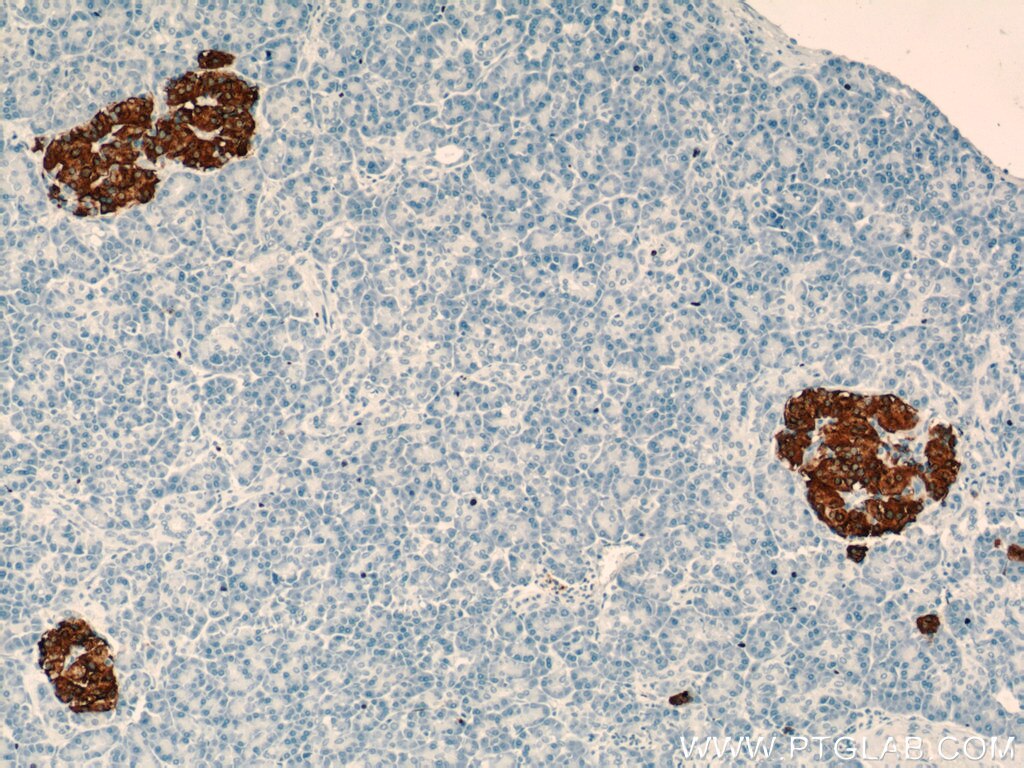IGF1R Monoklonaler Antikörper
IGF1R Monoklonal Antikörper für IHC, WB, ELISA
Wirt / Isotyp
Maus / IgG1
Getestete Reaktivität
human, Ratte und mehr (1)
Anwendung
WB, IHC, ELISA
Konjugation
Unkonjugiert
CloneNo.
3C6A11
Kat-Nr. : 66283-1-Ig
Synonyme
Galerie der Validierungsdaten
Geprüfte Anwendungen
| Erfolgreiche Detektion in WB | MCF-7-Zellen, A549-Zellen, C6-Zellen, HEK-293-Zellen, HeLa-Zellen, HepG2-Zellen, HUVEC-Zellen, ROS1728-Zellen |
| Erfolgreiche Detektion in IHC | humanes Mammakarzinomgewebe, humanes Endometriumkarzinomgewebe, humanes Lungenkarzinomgewebe Hinweis: Antigendemaskierung mit TE-Puffer pH 9,0 empfohlen. (*) Wahlweise kann die Antigendemaskierung auch mit Citratpuffer pH 6,0 erfolgen. |
Empfohlene Verdünnung
| Anwendung | Verdünnung |
|---|---|
| Western Blot (WB) | WB : 1:1000-1:8000 |
| Immunhistochemie (IHC) | IHC : 1:50-1:500 |
| It is recommended that this reagent should be titrated in each testing system to obtain optimal results. | |
| Sample-dependent, check data in validation data gallery | |
Veröffentlichte Anwendungen
| WB | See 5 publications below |
| IHC | See 1 publications below |
Produktinformation
66283-1-Ig bindet in WB, IHC, ELISA IGF1R und zeigt Reaktivität mit human, Ratten
| Getestete Reaktivität | human, Ratte |
| In Publikationen genannte Reaktivität | human, Maus, Ratte |
| Wirt / Isotyp | Maus / IgG1 |
| Klonalität | Monoklonal |
| Typ | Antikörper |
| Immunogen | Peptid |
| Vollständiger Name | IGF I receptor |
| Berechnetes Molekulargewicht | 155 kDa |
| Beobachtetes Molekulargewicht | 130-140 kDa |
| GenBank-Zugangsnummer | NM_000875 |
| Gene symbol | IGF1R |
| Gene ID (NCBI) | 3480 |
| Konjugation | Unkonjugiert |
| Form | Liquid |
| Reinigungsmethode | Protein-A-Reinigung |
| Lagerungspuffer | PBS mit 0.02% Natriumazid und 50% Glycerin pH 7.3. |
| Lagerungsbedingungen | Bei -20°C lagern. Nach dem Versand ein Jahr lang stabil Aliquotieren ist bei -20oC Lagerung nicht notwendig. 20ul Größen enthalten 0,1% BSA. |
Hintergrundinformationen
IGF1R, also named CD221, belongs to the protein kinase superfamily, Tyr protein kinase family, and INS receptor subfamily. IGF1R binds INS-like growth factor 1 (IGF1) with a high affinity and IGF2 with a lower affinity. It has a tyrosine-protein kinase activity, which is necessary for the activation of the IGF1-stimulated downstream signaling cascade. When present in a hybrid receptor with INSR, IGF1R binds IGF1. The hybrid receptors composed of IGF1R and INSR isoform Long are activated with a high affinity by IGF1, with low affinity by IGF2, and not significantly activated by INS, and that hybrid receptor composed of IGF1R and INSR isoform Short are activated by IGF1, IGF2, and INS. In contrast, the hybrid receptors composed of IGF1R and INSR isoform Long and hybrid receptors composed of IGF1R and INSR isoform Short have similar binding characteristics, both bind IGF1 and have a low affinity for INS. Defects in IGF1R may be a cause in some cases of resistance to INS-like growth factor 1 (IGF1 resistance).
Protokolle
| Produktspezifische Protokolle | |
|---|---|
| WB protocol for IGF1R antibody 66283-1-Ig | Protokoll herunterladen |
| IHC protocol for IGF1R antibody 66283-1-Ig | Protokoll herunterladen |
| Standard-Protokolle | |
|---|---|
| Klicken Sie hier, um unsere Standardprotokolle anzuzeigen |
Publikationen
| Species | Application | Title |
|---|---|---|
Thyroid A MULTICENTER, SINGLE-BLIND, CASE-CONTROL, IMMUNOHISTOCHEMICAL STUDY OF ORBITAL TISSUE IN THYROID EYE DISEASE | ||
Cell Signal Cell surface GRP78 facilitates hepatoma cells proliferation and migration by activating IGF-IR. | ||
Behav Brain Res Possible mechanisms of prenatal cold stress induced-anxiety-like behavior depression in offspring rats. | ||
Biosci Biotechnol Biochem Black rice bran intake reduces phosphorylated tau levels and enhances insulin signaling in the brain of aged normal mice | ||
Eur J Obstet Gynecol Reprod Biol Comprehensive assessment the expression of core elements related to IGFIR/PI3K pathway in granulosa cells of women with polycystic ovary syndrome. | ||
Drug Deliv Codelivery of DOX and siRNA by folate-biotin-quaternized starch nanoparticles for promoting synergistic suppression of human lung cancer cells. |
